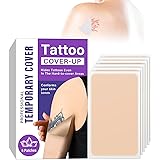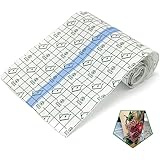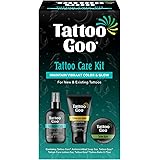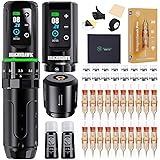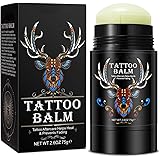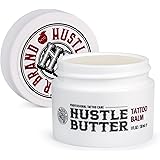Have you ever scrolled through social media, admiring stunning bullet journal spreads, only to feel a pang of intimidation when considering your own? It’s a common experience for many enthusiasts, as the intricate lettering styles displayed can appear daunting to replicate. However, transforming your bullet journal into a personalized work of art doesn’t require innate artistic genius; it simply demands a foundational understanding and consistent practice. The video above offers an excellent starting point, demonstrating a remarkable array of 30 different lettering styles for beginners, breaking down complex techniques into manageable steps. This guide expands upon those visual demonstrations, delving deeper into the principles and practical applications behind each category, providing expert insights to elevate your hand lettering journey.
Mastering these foundational techniques is crucial for anyone aspiring to create aesthetically pleasing and functionally effective bullet journal layouts. Understanding the nuances of letter construction and modification allows for greater creative control and consistency across your entries. Our discussion will dissect each of the five categories presented by Caitlin, offering additional context and actionable advice to refine your approach. By the time you conclude this reading, you will possess a more profound comprehension of not only how to create these bullet journal fonts but also the underlying design considerations that make them impactful. Let us explore these diverse lettering styles for beginners with an analytical eye, fostering both skill development and artistic confidence.
Mastering Basic Lettering Techniques for Bullet Journals
The journey into captivating hand lettering invariably begins with solid fundamental skills, forming the bedrock for all subsequent creative explorations. Caitlin’s initial category, “The Basics,” meticulously outlines the essential elements of uppercase and lowercase letterforms, a prerequisite for any aspiring typographer or journal artist. Commencing with a standard, even stroke allows practitioners to establish muscle memory and develop a consistent visual rhythm. Furthermore, variations in stroke width, such as “skinnier lettering” where letters are drawn closer, or “wider lettering” with increased spacing, introduce critical concepts of kerning and leading. These adjustments significantly influence the perceived density and readability of text blocks, thereby enhancing overall aesthetic appeal within a bullet journal.
Understanding the interplay between letterforms and negative space is paramount; therefore, experimenting with the proximity of individual letters cultivates an acute awareness of visual balance. For instance, reducing the space between letters in “skinnier lettering” creates a more condensed, often elegant, appearance, ideal for headers requiring a sleek profile. Conversely, “wider lettering” provides an expansive, airy feel, which can be advantageous for subheadings or focal points needing more visual weight. Practicing these basic modifications in both uppercase and lowercase forms ensures a comprehensive understanding of how letter structure adapts to different spatial requirements. Consequently, a mastery of these fundamental lettering styles for beginners directly translates into superior typographical design within any journaling context.
Creative Font Expansion Strategies for Dynamic Journaling
Building upon the basic principles, the “Expansion” category introduces methods for significantly altering letter appearance, moving beyond simple stroke variations. This involves manipulating letter proximity and size to create diverse visual effects and establish hierarchical importance within your bullet journal. The concept of varying letter spacing, either by keeping words “close together” for a compact look or creating “gaps in between” for a more disjointed yet artistic effect, directly influences the flow and interpretation of text. Furthermore, the introduction of “small” or “big” letters within a word or phrase enables the artist to emphasize specific elements, guiding the reader’s eye with deliberate intention. This strategic use of scale is a powerful tool in visual communication, ensuring important details stand out.
A particularly insightful tip from the video highlights the utility of dot grid journals, suggesting letters can be precisely scaled, such as “three dots high and two dots wide,” leveraging the inherent structure of the page. This structured approach to sizing ensures consistency and professionalism, especially beneficial for those new to hand lettering. Furthermore, the inventive technique of combining uppercase and lowercase letters within a single word, as demonstrated, offers a highly versatile stylistic choice. This hybrid approach adds a contemporary flair, breaking traditional typographic conventions to produce unique and expressive bullet journal fonts. Consequently, exploring these expansion techniques opens a myriad of possibilities for personalized and impactful journal entries, fostering a unique aesthetic.
Crafting Distinctive Block and Bubble Letters
The “Block or Bubble Letters” category presents an opportunity to introduce significant visual weight and dimensionality to your bullet journal, offering a distinct departure from simpler script forms. This style, demonstrated using the word “bubble,” begins by outlining the exterior of each letter, with the initial example featuring crisp, angular edges. A compelling variation involves an enlarged initial letter, such as a “larger B” paired with smaller uppercase letters, establishing a clear visual hierarchy and drawing immediate attention to the phrase. Moreover, once the letterform is established, artists have the option to fill the interior with lines, as shown, or completely color it in, thereby creating a solid, bold presence on the page. These lettering styles for beginners provide foundational skills for more advanced graphic elements.
Another crucial stylistic choice within block lettering involves the treatment of edges; specifically, transitioning from the initial “crisp lines” to “more rounded edges” for a softer, more playful aesthetic. The visual impact of these rounded contours differs significantly from sharp angles, influencing the overall mood and impression conveyed by the text. When creating bubble letters, maintaining consistency in stroke width and curvature is paramount to achieving a cohesive and professional appearance. Furthermore, experimenting with internal patterns or textures, beyond simple coloring, can add an additional layer of complexity and personalization. Consequently, the careful application of these block and bubble letter techniques can dramatically enhance the visual interest and expressive capacity of any bullet journal font design.
Dynamic Drop Shadow Effects for Enhanced Depth
Drop shadows are a sophisticated technique that can dramatically enhance the visual depth and ‘pop’ of your bullet journal fonts, creating the illusion that letters are lifting off the page. Caitlin’s demonstration, primarily with the word “color,” highlights the crucial concept of an imagined light source, guiding the placement of the shadow. Focusing the drop shadow consistently on one side, such as the “left side of the letter” or the “right side of the letter,” establishes a coherent visual effect and prevents a disorienting appearance. This consistency is vital for maintaining a professional and polished look, irrespective of the complexity of the chosen lettering style for beginners. Furthermore, the subtle shift in perspective afforded by the shadow can transform flat text into a three-dimensional element, adding significant graphic interest.
Beyond simple directional shadows, the video also explores variations such as merely “outlining the word itself,” which creates a more subtle, graphic shadow effect, or leaving a “little gap” between the letter and its shadow line. This gap introduces an additional layer of complexity, often preceding a “thicker drop shadow” created by coloring in the space, which generates a more pronounced sense of depth. The creative application of shading, exemplified by using “little line shading in the background” for the word “joy,” introduces texture and dynamism into the shadow area. These diverse drop shadow techniques, ranging from simple outlines to textured fills, offer a powerful arsenal for artists seeking to imbue their hand lettering with greater visual impact and stylistic flair. Careful consideration of these effects can significantly elevate the overall design of your journal entries.
Advanced Lettering Combinations for Your Bullet Journal
The final category, appropriately titled “Other,” serves as a creative crucible where various foundational lettering styles for beginners are combined to forge truly unique and expressive forms. This section encourages imaginative experimentation, integrating elements from basic, expansion, block, and drop shadow techniques into novel configurations. For instance, the combination of “block lettering with a normal lettering,” where one half of a letter is thick and the other thin, then filled with black marker, demonstrates a sophisticated understanding of visual contrast and texture. Further still, applying textured shading within these combined block letters, mirroring the technique used for “joy,” adds another layer of artistic intricacy and depth. These hybrid approaches allow for an unparalleled degree of personalization in bullet journal fonts.
Exploring Dynamic Visual Enhancements
Among the more whimsical and effective advanced combinations is the incorporation of “little squiggles at the beginning and the end of each of the lines you do,” particularly when pairing a capital letter with lowercase letters on the same line. This playful embellishment adds personality and a distinct organic feel to the text, breaking the rigidity of straight lines. Furthermore, introducing simple “lines” or “dots” on the side of letters, as demonstrated, offers minimalist yet impactful decorative accents that can subtly alter the perception of a word. The concept of a “block letter in the back in some type of color, and a cursive lettering on top” exemplifies a powerful technique for creating visual hierarchy and layering. This method not only adds vibrant color but also juxtaposes different font styles for a rich, multi-dimensional effect, enhancing hand lettering aesthetics.
Mastering Faux Calligraphy and Typewriter Fonts
Faux calligraphy is a highly accessible technique for beginners to emulate the elegant strokes of traditional calligraphy without needing specialized brush pens. This involves drawing a word in a regular script, then thickening the “downstrokes” to create the illusion of varied line weight, a hallmark of authentic calligraphy. Variations include coloring in these thickened downstrokes or employing line shading within them, offering different textural finishes. The “bouncy letter” style, a playful take on faux calligraphy, intentionally varies the baseline of letters, creating a dynamic, energetic appearance. This style adds significant character and expressiveness, making it a popular choice among those exploring diverse bullet journal fonts.
Concluding the extensive tutorial, the demonstration of “typewriter font” variations introduces a classic, structured aesthetic that can bring a sense of nostalgia and order to your journal pages. This involves creating letters with distinct “little lines on the ends of each letter,” known as serifs, which are characteristic of traditional typefaces. Further refinement includes “staggering the letters,” much like the block section’s demonstration of varied baselines, to add visual interest while maintaining the typewriter’s characteristic rigid structure. The final variation, incorporating “little dots on the end of each of the letters,” offers a charming and contemporary twist on this classic font, providing a softer finish. These diverse lettering styles for beginners provide ample opportunities for personalization and creative expression within any bullet journal project.



